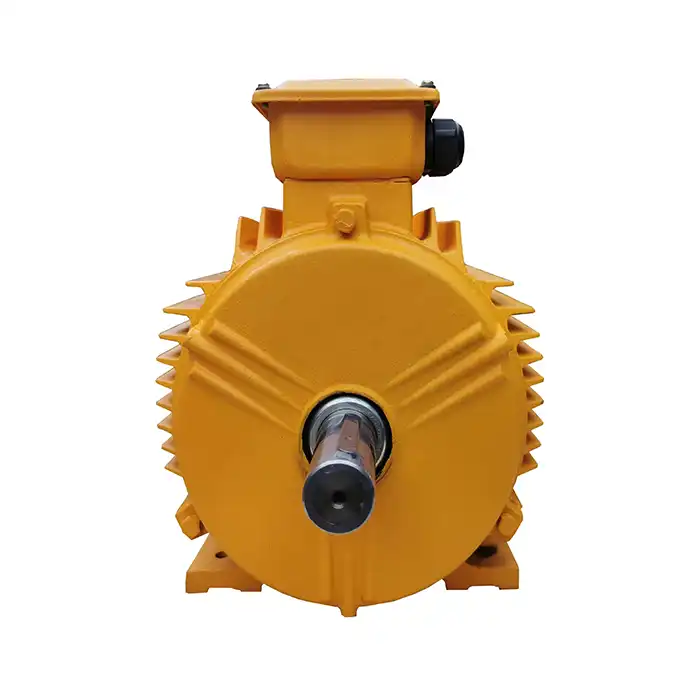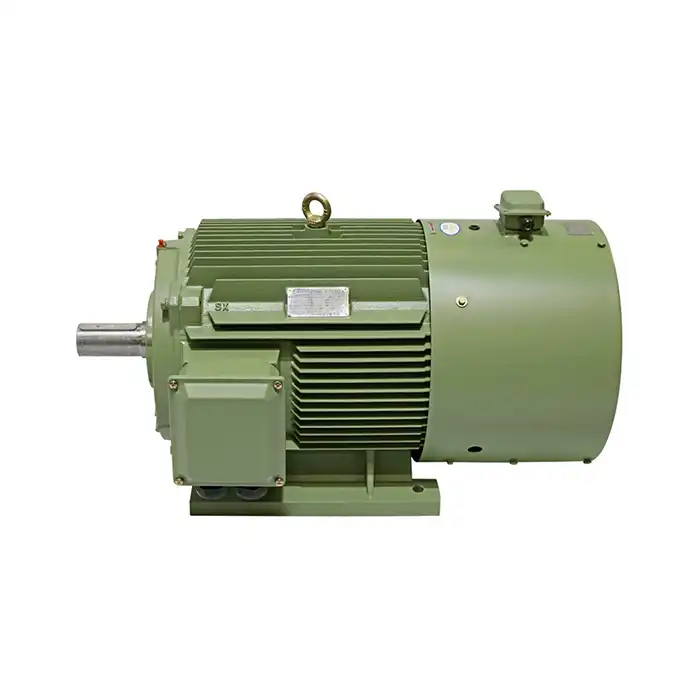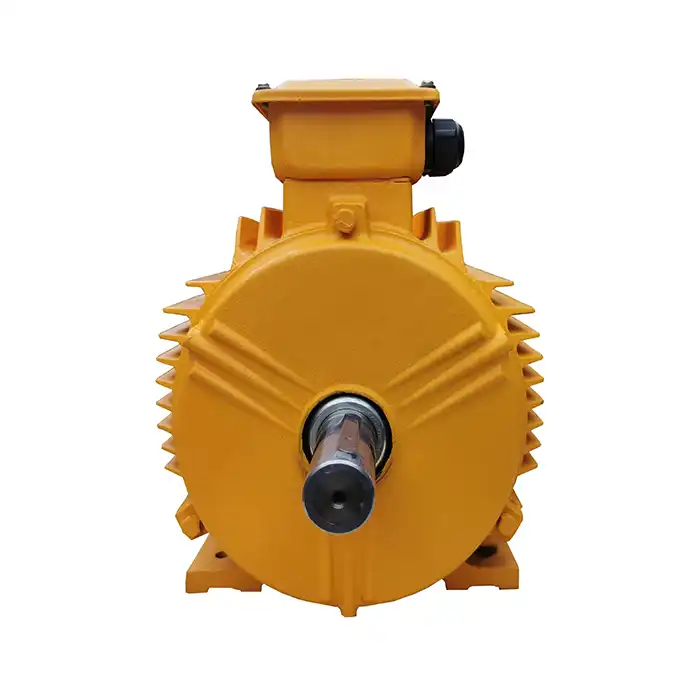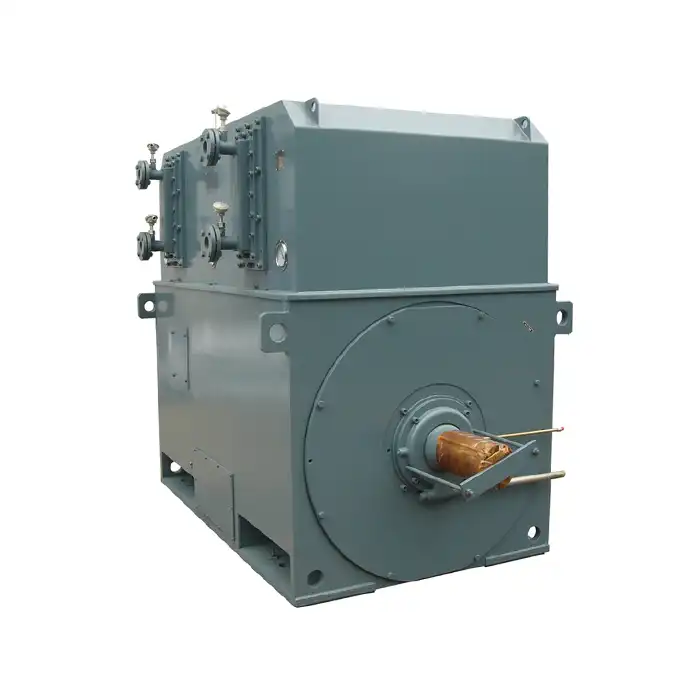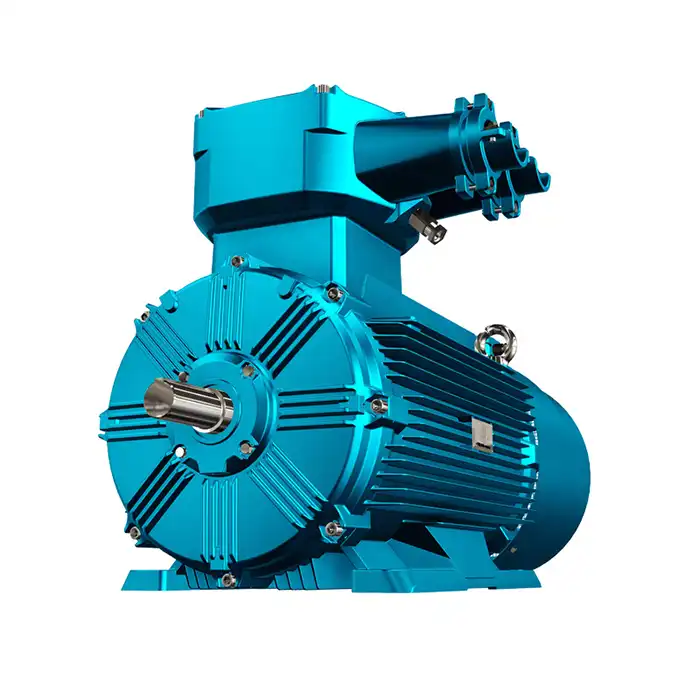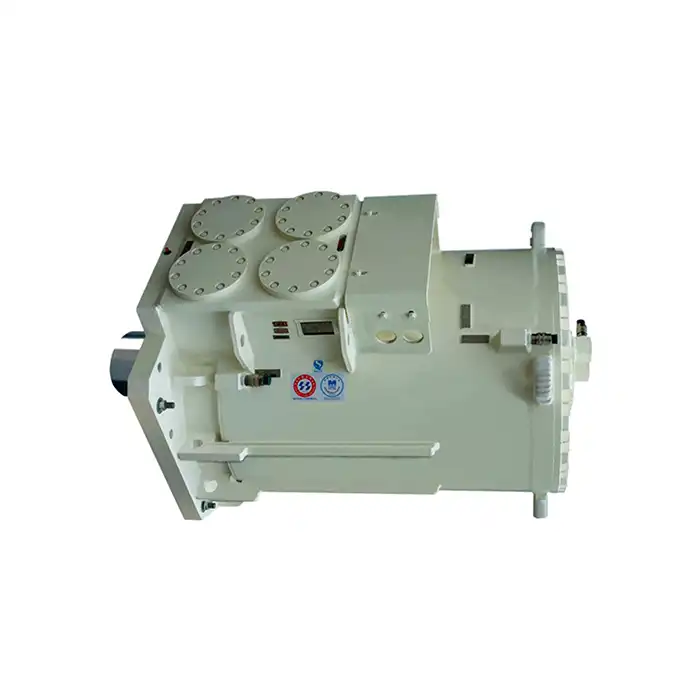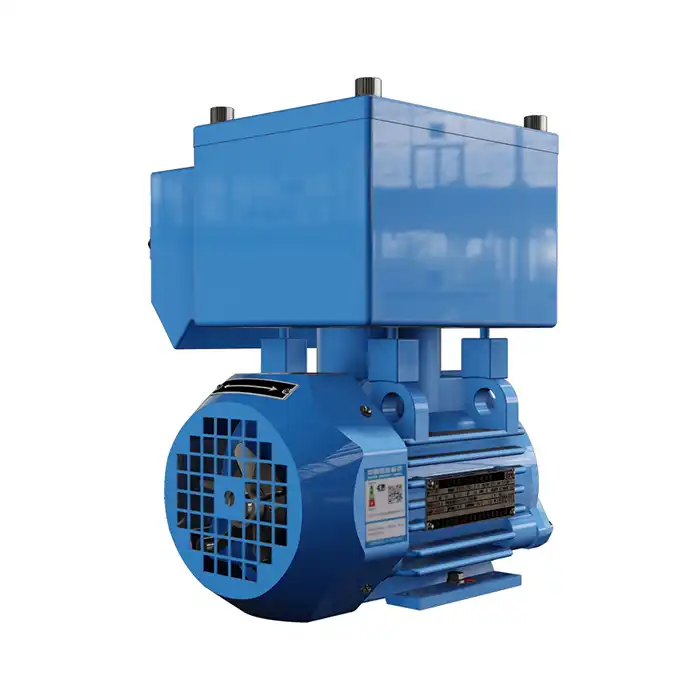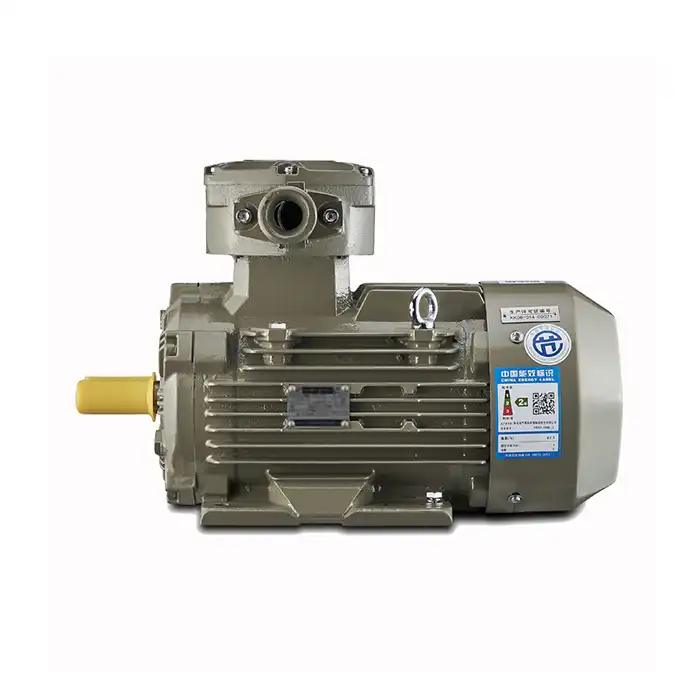IP 54 motor technology stands as a cornerstone for dependable industrial and commercial operations. These motors blend protection and efficiency, ensuring systems maintain consistent functionality even in environments with dust and water splashes. Their robust design resists common industrial contaminants, safeguarding internal components and reducing downtime. This blend of durability and performance makes IP 54 motors a critical choice for sectors requiring dependable machinery operation without excessive protective costs. Organizations that adopt IP 54 motors benefit from sustained productivity and lowered maintenance overhead, underpinning their essential role in reliable performance.
Understanding IP 54 Motors
What is an IP 54 Motor?
An IP 54 motor is identified by its ingress protection rating, which denotes the level of defense it provides against solids and liquids. Specifically, the number 5 indicates protection against dust ingress sufficient to prevent harm to the motor's operation, while the number 4 means protection against water splashes from any direction. This rating strikes a careful balance, offering substantial guarding where moderate dust and water exposure occur without incurring the higher costs tied to more stringent IP ratings. For example, IP 54 motors are well-suited for many industrial environments where dust and occasional moisture are present but not overwhelming.
Visualizing the IP 54 protection level helps clarify its range: particles larger than 1 mm are blocked, and water splashing from all angles offers no threat to motor integrity. This IP rating ensures motors remain functional and safe in routine industrial conditions without unnecessary over-design in waterproofing or dustproofing.
Applications of IP 54 Motors
The versatility of IP 54 motors places them at the heart of numerous sectors. Manufacturing lines in automotive, aerospace, electronics, and food production benefit from their robust and efficient design. In HVAC units—both commercial and residential—these motors maintain airflow control and temperature regulation under challenging conditions. Their utility also extends to agriculture, supporting equipment that must perform reliably amid dust and moisture.
IP 54 motors contribute significantly to process control systems, including pumps, valves, and compressors, where quick response and accurate positioning ensure optimal operation. Robotics and automation industries leverage IP 54 motors for their balance of reliability and protection, critical to maintaining continuous, high-precision tasks.
These practical deployments underscore how IP 54 motors accommodate environments with moderate dust and water exposure, delivering consistent performance that industries depend on daily.
Comparing IP 54 Motors with Other IP Ratings
IP 54 vs. IP 55 Motors
In selecting appropriate motors, understanding the differences between IP 54 and IP 55 is vital. While both provide effective dust protection, IP 55 motors carry an edge with enhanced water resistance designed to withstand low-pressure water jets. This makes IP 55 motors preferable in environments where direct water spray is common but not at high intensity. Conversely, IP 54 motors suffice in locations where water presence is limited primarily to splashes.
IP 54 vs. Higher IP Ratings (IP 65, IP 66, IP 67)
Higher IP ratings like IP 65, IP 66, and IP 67 provide progressively stronger barriers against dust and water. For instance, IP 65 motors are dust-tight and guarded against low-pressure water jets, whereas IP 67 offers protection against immersion up to 1 meter. Despite these advantages, their deployment involves increased manufacturing complexity, higher purchase costs, and potentially reduced energy efficiency depending upon design.
Buyers must weigh these trade-offs against operational demands. IP 54 motors often strike an optimal balance where conditions do not necessitate complete dust tightness or immersion resistance. Implementing a cost-benefit analysis that considers environmental factors, energy consumption, and maintenance demands can streamline procurement decisions, avoiding overspecification and managing budgets efficiently.
Choosing the Best IP 54 Motor for Your Needs
Selecting a reputable brand ensures access to reliable motors backed by excellent customer service and technical support. Many companies also offer flexible bearing options, including SKF, NSK, and FAG, allowing customization tailored to specific operational needs. Choosing trusted IP 54 motor manufacturers mitigates risk and guarantees availability of replacement parts and warranty services.
Factors to Consider When Purchasing
Several essential factors influence motor choice beyond protective ratings. Price considerations must align with budget while maintaining quality standards. Availability and lead times impact project schedules, making prompt delivery crucial for operational continuity.
Technical support and after-sales services deliver peace of mind, assisting customers during installation and troubleshooting. Further factors include compatibility with intended applications, expected ambient temperatures (ranging -15°C to +40°C), insulation class (typically Class F), and mounting options. Assessing these elements upfront streamlines selection and ensures long-term satisfaction with motor performance.
Here is a checklist to aid buyers:
- Confirm voltage compatibility, commonly 380V±5% with frequencies like 50Hz;
- Evaluate power requirements, from 0.55 kW to 355 kW is typical;
- Check speed ranges, usually between 600 to 3000 RPM;
- Review protection class and environmental suitability (IP 54 standard or higher if needed);
- Analyze bearing options per operational needs;
- Ensure availability of technical support and warranty coverage.
Aligning these considerations with operational demands secures optimum motor performance and longevity.
Company Introduction and Product Services
Shaanxi Qihe Xicheng Electromechanical Equipment Co., Ltd. leads in delivering power equipment solutions tailored for high energy efficiency, low consumption, and consistent power delivery. Our IP54 motors are engineered with cast iron frames, copper windings, and premium insulation to withstand the rigors of diverse industrial applications from manufacturing to HVAC systems.
Manufactured through precision die-casting and vacuum pressure impregnation, our motors meet stringent quality checks. They support a wide voltage range (380V to 660V) and power outputs from 0.75 kW to 355 kW, catering to comprehensive operational needs. Our product offers rapid braking, simple structure designs, and accurate positioning, ideal for quick stops and precise spindle control in machine tools, printing machinery, and more.
Customers enjoy benefits such as original trusted brand parts, expedited delivery at no extra cost, 30-day return policies, and dedicated weekend support. Our commitment is to provide reliable equipment backed by expert pre-sale and after-sale services, ensuring operational confidence.
Conclusion
IP 54 motors represent a pragmatic and cost-effective solution for numerous industrial and commercial processes requiring protection against moderate dust and moisture. Their balanced design ensures durability, efficiency, and long service life, supporting sectors ranging from manufacturing and HVAC to agriculture and energy. When compared to higher IP ratings, they offer an optimal trade-off between protection and cost, making them indispensable in environments where conditions do not demand the utmost ingress resistance. Partnering with reputable suppliers like Shaanxi Qihe Xicheng Electromechanical Equipment Co., Ltd. guarantees access to advanced IP 54 motors backed by technical expertise and reliable customer support—keys to maintaining seamless operations.
Investing in an IP 54 motor safeguards your equipment investment, enhances performance reliability, and minimizes unexpected maintenance. These attributes underscore their essential role in today's industrial landscape.
Frequently Asked Questions
Q1: What are the main features of an IP 54 motor?
A: An IP 54 motor safeguards against harmful dust ingress while resisting water splashes from any direction. It maintains steady function without the expense of higher waterproof ratings, making it suitable for moderately demanding industrial applications.
Q2: How does an IP 54 motor compare to an IP 65 motor in terms of waterproofing?
A: IP 65 motors offer complete protection against dust and guard against low-pressure water jets, providing a superior water defense. IP 54 motors primarily resist water splashes, so they are less suited for environments with stronger or more constant water exposure.
Q3: Can IP 54 motors be used in outdoor environments?
A: Yes, these motors are fit for outdoor usage where weather conditions remain moderate. They protect internal components against dust and splashes but are not designed for heavy rain or immersion.
Where to Buy IP 54 motor
To purchase high-quality IP 54 motors, consider reaching out to XCMOTOR, known for prompt delivery, genuine components, and exceptional customer care. Our extensive selection caters to a range of industrial applications with voltage ranges of 380V±5% and power outputs spanning 0.55 to 355 kW. Our team offers knowledgeable support and after-sales service to guide you through your motor selection and integration process. Contact us at xcmotors@163.com to explore our product catalog and receive tailored recommendations to fit your technical requirements.
References
- International Electrotechnical Commission: IEC 60529 - Degrees of Protection Provided by Enclosures (IP Code)
- Electric Motor Engineering Handbook, Krutz MG, Application of IP Ratings in Motor Protection
- Manufacturing Automation: Principles and Practice, Groover MP, Use of IP Rated Motors in Automation Equipment
- HVAC Principles and Applications, American Society of Heating, Refrigerating and Air-Conditioning Engineers (ASHRAE) Publications
- Industrial Electric Motors and Control Systems, Bullemer T., Analysis of Motor Protection Methods in Industrial Environments
- Power Generation Technology Journal, Recent Trends in Protective Enclosure Ratings for Energy Sector Motors



